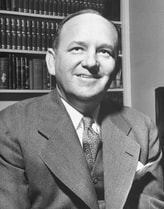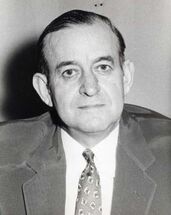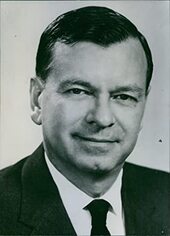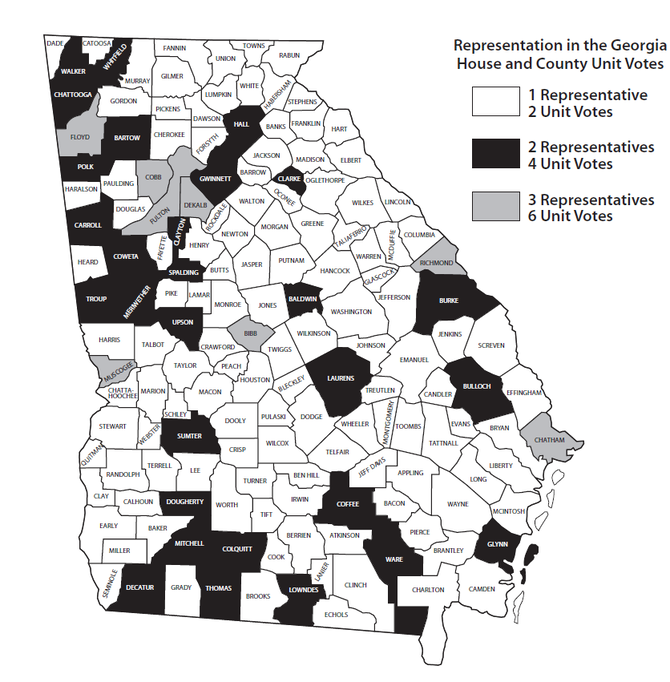Unit 11- Modern Georgia (Post World War II Georgia)
SS8H10- Evaluate key post-World War II developments in Georgia.
a. Explain how technology transformed agriculture and created a population shift within the state.
b. Explain how the development of Atlanta under mayors William B. Hartsfield and Ivan Allen, Jr. impacted the state.
c. Describe the relationship between the end of the white primary and the 1946 governor’s race.
a. Explain how technology transformed agriculture and created a population shift within the state.
b. Explain how the development of Atlanta under mayors William B. Hartsfield and Ivan Allen, Jr. impacted the state.
c. Describe the relationship between the end of the white primary and the 1946 governor’s race.
Population Shifts after World War II
Between 1945 and 1950, almost 28,000 Georgia families— mostly tenant farmers—left agriculture. Altogether, between 1920 and 1950, the number of Georgia farms decreased by more than 100,000.
This decrease in the number of farmers can be attributed to several factors:
1. Post-War veterans were taking advantage of the benefits provided by the G.I. Bill and sought opportunities outside of farming.
2. New technology and research in farming made the number of "hands" needed on the farm redundant. These improvements include better seeds, fertilizer, and pesticides. Additionally, the concepts of crop rotation and soil erosion control were heavily encouraged. Many of these improvements were brought to the forefront by the University of Georgia's agriculture extension agents.
3. Even more radical was the affordability and availability of mechanization to the farm. Farmers were now in the position to use tractors and harvestors rather than rely on mule-driven plows and hand-picked cotton.
4. These improvements caused farming to become so efficent that crop yield increased dramatically. Because so much was being produced, the U.S. government payed subsidies for many farmers to NOT grow crops in order to keep prices from dropping too low. This, too, reduced the need of farmers.
1. Post-War veterans were taking advantage of the benefits provided by the G.I. Bill and sought opportunities outside of farming.
2. New technology and research in farming made the number of "hands" needed on the farm redundant. These improvements include better seeds, fertilizer, and pesticides. Additionally, the concepts of crop rotation and soil erosion control were heavily encouraged. Many of these improvements were brought to the forefront by the University of Georgia's agriculture extension agents.
3. Even more radical was the affordability and availability of mechanization to the farm. Farmers were now in the position to use tractors and harvestors rather than rely on mule-driven plows and hand-picked cotton.
4. These improvements caused farming to become so efficent that crop yield increased dramatically. Because so much was being produced, the U.S. government payed subsidies for many farmers to NOT grow crops in order to keep prices from dropping too low. This, too, reduced the need of farmers.
5. Also contributing to the decline of the farmer was the clothing industry's heavy use of synthetic fibers rather than cotton.
Many farmers, as a result, turned to other crops such as peanuts, soybeans, tobacco, wheat, and corn. Others turned to non-crops like poultry and livestock. The harvesting of pine became very prominent during the time frame as an alternative to cotton production. Pine wood contributed to pulp for paper, timber for plywood and lumber, as well as turpentine from its sap.
Many farmers, as a result, turned to other crops such as peanuts, soybeans, tobacco, wheat, and corn. Others turned to non-crops like poultry and livestock. The harvesting of pine became very prominent during the time frame as an alternative to cotton production. Pine wood contributed to pulp for paper, timber for plywood and lumber, as well as turpentine from its sap.
As farming declined, so did Georgia's rural population. 91 of Georgia's 159 counties lost population after World War II....a large number of people who migrated away from Georgia during this period were African-Americans seeking better opportunities in large Northern cities.
Two Great Atlanta Mayors: William B. Hartsfield and Ivan Allen, Jr.

William B. Hartsfield (1890-1971) served as Atlanta's mayor from 1937-1941 and 1942-1960. He was noteworthy for several accomplishments during his tenure as city councilman and mayor:
- he was instrumental in establishing Atlanta's first airport...After his death in 1971, Atlanta named its airport Hartsfield International in his honor
- he was instrumental in the calm integration of Atlanta’s public schools
- his support of the civil rights movement kept Atlanta from the racial violence that engulfed many other southern cities, thus, earning Atlanta the phrase "the city too busy to hate"
- he helped triple Atlanta’s size by annexing several square miles, overseeing the building of many public parks, and expanding Atlanta’s expressway system
- he was instrumental in establishing Atlanta's first airport...After his death in 1971, Atlanta named its airport Hartsfield International in his honor
- he was instrumental in the calm integration of Atlanta’s public schools
- his support of the civil rights movement kept Atlanta from the racial violence that engulfed many other southern cities, thus, earning Atlanta the phrase "the city too busy to hate"
- he helped triple Atlanta’s size by annexing several square miles, overseeing the building of many public parks, and expanding Atlanta’s expressway system

Ivan Allen, Jr. (1911-2003), Atlanta’s mayor from 1962-1970, continued William B. Hartsfield’s aggressive development policies.
- on Allen’s first day as mayor he had all of the white and “colored” signs removed from city hall and desegregated the building’s cafeteria.
- Allen worked with Martin Luther King Jr. and Atlanta’s business leaders to secure the city’s smooth transition into desegregation
- He was instrumental in the building of Interstate 285, was an early advocate of the M.A.R.T.A. (Metropolitan Atlanta Rapid Transit Authority) commuter rail line, and was responsible for 55 new building projects during his tenure as mayor.
- Perhaps Allen may be best known for his support of bringing major league sports teams to the city. He convinced Atlanta’s political, economic and social leaders to financially support the construction of major league stadiums. This gave Atlanta an aura of being a “Major League City” and their facilities ultimately helped to bring the 1996 Olympic Games to the city. Allen brokered the deal to bring the Braves to Atlanta in 1966. He also persuaded the NFL to start a new franchise in the city, which became known as the Atlanta Falcons. The basketball team, the Hawks, would follow in 1968.
- on Allen’s first day as mayor he had all of the white and “colored” signs removed from city hall and desegregated the building’s cafeteria.
- Allen worked with Martin Luther King Jr. and Atlanta’s business leaders to secure the city’s smooth transition into desegregation
- He was instrumental in the building of Interstate 285, was an early advocate of the M.A.R.T.A. (Metropolitan Atlanta Rapid Transit Authority) commuter rail line, and was responsible for 55 new building projects during his tenure as mayor.
- Perhaps Allen may be best known for his support of bringing major league sports teams to the city. He convinced Atlanta’s political, economic and social leaders to financially support the construction of major league stadiums. This gave Atlanta an aura of being a “Major League City” and their facilities ultimately helped to bring the 1996 Olympic Games to the city. Allen brokered the deal to bring the Braves to Atlanta in 1966. He also persuaded the NFL to start a new franchise in the city, which became known as the Atlanta Falcons. The basketball team, the Hawks, would follow in 1968.
The Three Governors Controversy
Primary Election of 1946
Eugene “Ol’ Gene” Talmadge vs. James V. “Jimmy” Carmichael- Talmadge was defeated for reelection in the 1946 Democratic primary by James V. "Jimmy" Carmichael, 313,389 to 297,245. Thanks to a unique Georgia law known as the "county-unit" rule (see below), which favored rural Georgia over major metropolitan areas, Talmadge was the winner of the Democratic primary.
Note: Georgia was overwhelmingly Democrat so no Republican candidate posed a threat in the general election.
Eugene “Ol’ Gene” Talmadge vs. James V. “Jimmy” Carmichael- Talmadge was defeated for reelection in the 1946 Democratic primary by James V. "Jimmy" Carmichael, 313,389 to 297,245. Thanks to a unique Georgia law known as the "county-unit" rule (see below), which favored rural Georgia over major metropolitan areas, Talmadge was the winner of the Democratic primary.
Note: Georgia was overwhelmingly Democrat so no Republican candidate posed a threat in the general election.
|
****Here’s the rub…Even before the start of the gubernatorial campaign in September 1946, "Ol' Gene's" friends knew something was wrong. He was having trouble concentrating, making mistakes during stump speeches and had an unusual look. His colleagues did not know it at the time, but Gene Talmadge was in the final stages of cirrhosis, from a life of hard-drinking. They did realize, however, that they should have a backup plan in case Gene was unable to serve so they asked some people to vote for his son, Herman Talmadge as a write-in candidate to take advantage of a Georgia law that stated when the governor was elected but could not serve the legislature elected the new governor. Gene dies before taking the oath of office for governor |

So, here’s what happened…you end up with three people all claiming to be Governor of Georgia…

Ellis Arnall
…was the outgoing Governor of Georgia until February 1947. He figured that he should still be the governor because there was no one to replace him until voters could cast their ballot for a new governor in a special election. He refused to accept the election vote and set up an office at the capitol’s welcome desk.
…was the outgoing Governor of Georgia until February 1947. He figured that he should still be the governor because there was no one to replace him until voters could cast their ballot for a new governor in a special election. He refused to accept the election vote and set up an office at the capitol’s welcome desk.

Melvin “M.E.” Thompson
…was elected to the newly created position of Lieutenant Governor. He felt that the office of governor had already replaced Arnall by voter election so the title of governor should fall to him because the Georgia Constitution stipulated that the Lt. Governor would become the chief executive upon the death of the governor. He said that we would await a Georgia Supreme Court decision. He rented out an office across the street from the Capitol.
…was elected to the newly created position of Lieutenant Governor. He felt that the office of governor had already replaced Arnall by voter election so the title of governor should fall to him because the Georgia Constitution stipulated that the Lt. Governor would become the chief executive upon the death of the governor. He said that we would await a Georgia Supreme Court decision. He rented out an office across the street from the Capitol.

Herman Talmadge
…thought that he should be governor because he had received write-in votes, not his Dad. He manipulates the General Assembly into electing him Governor in early 1947. His supporters change the locks and refused to allow Thompson or Arnall into the Georgia capitol.
…thought that he should be governor because he had received write-in votes, not his Dad. He manipulates the General Assembly into electing him Governor in early 1947. His supporters change the locks and refused to allow Thompson or Arnall into the Georgia capitol.
What makes this contested election even more “iffy” is the number of write-in votes from Talmadge’s home county. Jimmy Carmichael had received the most write-in votes, 669, but announced that he wanted nothing to do with the Legislature electing a governor. A Republican write-in candidate named Talmadge Bowers - no mistake here, his first name was Talmadge - received 637 write-in votes to 617 for Herman Talmadge. But then at the last minute, Talmadge supporters “found” 57 more uncounted votes, out of Telfair County, and so those votes were counted and that gave Herman 674 votes. It was later discovered that all of the Telfair ballots were written in the same handwriting. The voters had also cast their ballots in alphabetical order, and some of the voters resided in local Telfair county cemeteries.
How was this embarrassing situation fixed?
*Arnall eventually relinquishes his claim to governorship once the General Assembly chose Talmadge but continued to support Thompson’s bid for governor.
** In March 1947 the Georgia Supreme Court ruled that Melvin E. Thompson was the rightful governor because he was lieutenant governor–elect when Eugene Talmadge died. In a five-to-two decision the justices ruled that Thompson would be the acting governor until a special election could be held to decide the remainder of the original term, which would have run from 1947 to 1951. Within two hours of the court decision, Herman Talmadge left the governor's office. His apparent capitulation surprised many who thought that he might challenge the ruling. Almost immediately he began campaigning for the special election in September 1948 in which Talmadge easily defeats Thompson.
How was this embarrassing situation fixed?
*Arnall eventually relinquishes his claim to governorship once the General Assembly chose Talmadge but continued to support Thompson’s bid for governor.
** In March 1947 the Georgia Supreme Court ruled that Melvin E. Thompson was the rightful governor because he was lieutenant governor–elect when Eugene Talmadge died. In a five-to-two decision the justices ruled that Thompson would be the acting governor until a special election could be held to decide the remainder of the original term, which would have run from 1947 to 1951. Within two hours of the court decision, Herman Talmadge left the governor's office. His apparent capitulation surprised many who thought that he might challenge the ruling. Almost immediately he began campaigning for the special election in September 1948 in which Talmadge easily defeats Thompson.
The County Unit System
In effect, the system of allotting votes by county, with little regard for population differences, allowed rural counties to control Georgia elections by minimizing the impact of the growing urban centers, particularly Atlanta. All 159 counties were classified according to population into one of three categories: urban, town, and rural. “Urban” counties were the 8 most populous; “town” counties were the next 30 in population size; and “rural” counties constituted the remaining 121. Based upon this classification, each county received unit votes in statewide primaries. The urban counties received six unit votes each, the town counties received four unit votes each, and the rural counties received two unit votes each.
Given that Georgia voters were almost entirely Democratic during the first half of the twentieth century, elections were more often decided at the primary stage than in the general election. In the Democratic primary, candidates concerned themselves more with winning counties than with winning the popular vote and thus spent far more time campaigning in rural areas and small towns than in the state's major cities. With a statewide total of 410 unit votes, a candidate needed 206 to win the party's nomination, despite the outcome of the popular vote. If a candidate won a plurality of the popular vote in a county, then he received the entire unit vote from that county, meaning that the votes of rural counties could easily equal, and effectively negate, the votes of urban counties. In many elections, candidates who received the majority of popular votes were defeated by candidates who carried the most county unit votes.
In Gray vs. Sanders (1963), Georgia's county unit system was declared unconstitutional by the U.S. Supreme Court. The decision said that votes of rural citizens could not count more than those of urban citizens. According to the ruling, the 14th Amendment to the U.S. Constitution was clear in requiring "one person, one vote."










